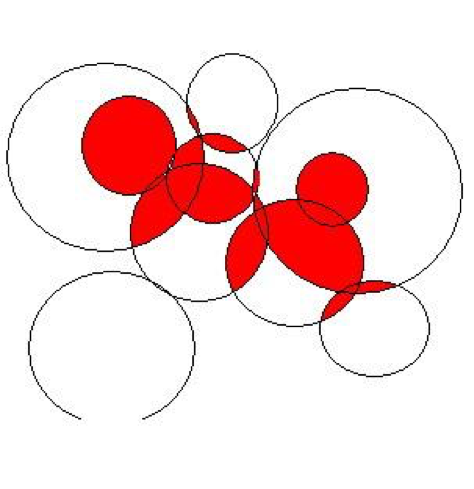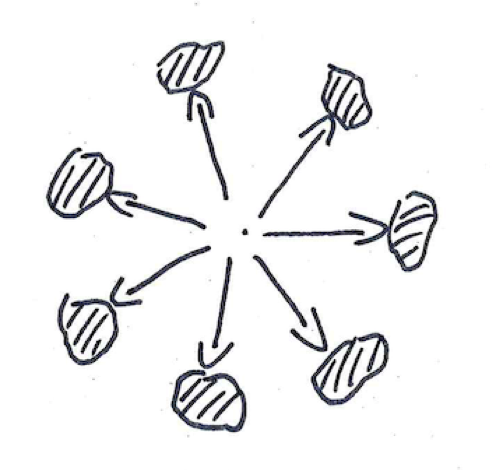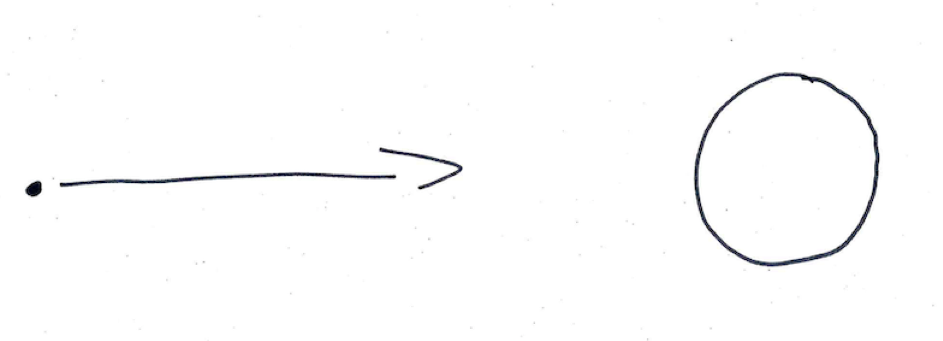Causing reality and the principle of superposition a force?
To get an idea about the mechanism of force I would like to exemplify a very important experiment of physics:
The diffraction of light by a double slit.
If light passes a double slit without being detected which way the light took for each light quantum a typical interference pattern appears behind the double slit as it is typical for waves. The light waves interfere with each other to build maxima and minima. This even works if we only send one light quantum at a time through the experimental arrangement.
As soon as we start to detect which way the light quantum took through the double slit the interference pattern disappears. The facts about where what and when we observe an object is changing the behavior of the observed object!
That’s clearly a kind of force as it’s changing the possible whereabouts of the photons. By looking at them at different places we can force them into different regions.
So I tried to setup a simulation program with very less ingrediencies.
So called points of existents in a matrix simulating space. In order to make them move they go into superposition and do have only a growing area of a possible whereabout. And they are able to interact with other points of existents. But by doing so they both drop out of superposition and get a new fixed real whereabout from which they start again going both into superposition again.
To simplify the basic mechanic behind let’s assume a flat universe containing two points of existence with a ‘temperature’ above zero so that they will move around. Unobserved the attribute ‘where’ of those points in this universe stays in a superposition of all possible whereabouts of the points.
Those points have the capability to observe each other as kind of exchanging information about their current whereabout in case they ‘collide’.
When and if they collide is random controlled through the probability of presence itself and a second component I call observation appetite which is a measure for how often in time the points try and look for a partner to collide with, at an out of the possible whereabouts randomly chosen place.
For both points random quasi whereabouts are determined controlled by the probability of presence. If those quasi whereabouts are close enough to each other a collision appears and those whereabouts are fixed getting real ,causing the superposition to collide if not they are discarded keeping the points in their superposition.
If we start this scenario from 2 different places for those two points the superposition of each point is growing in time around the points initial position. To keep it simple we assume that the area of the probability of presence grows absolute equal with a certain speed around the initial position building a circle. Within this circle the point has the same probability of presence at each place.
But as there is no possible observer at the beginning they stay in superposition. At some time it might be that the two superposition starting two overlap as illustrated in figure a
Fig a

From this point onwards it is possible that the superpositions of both points collapse and a new ‘where’ in this flat universe is defined as the momentary whereabouts of both points. This happens when those points ‘collide’ in this universe. If and where such an observation or ‘collision’ happens is dependent on the probability of presence from both points and their appetite of observation.
With describing the probability of presence for a point it’s implicated that there is always everywhere an observer. But that is not the case. If there is no possible observer a point in superposition will never drop out of its superposition. To give a probability of presence for a place without a possible observer is somehow misleading.
If we put some more points into this 2 dimensional space the whole scenario is staring to look like in fig b
Fig b

Many different areas of probabilities of presence are growing, collapsing and overlapping. Only within the overlapping areas a reciprocatively observation a ‘collision’ is possible.
Once such an observation happens between two points the superpositions of those points collapse defining a new ‘where’ and starts again from that new ‘where’.
From there it can be observed any time again from any other point it has an overlapping area of probability of presence.
This simple mechanism between those points of existence leads to a certain affinity between those points. We just created a force between them some kind of a simple gravity.
The very basic concept of superposition and observing alone is able to create a force between the object and observer simply because of statistical reasons. It is a statistical pressure or drag which is causing the effects interpreted as force. Its comparable to the Quanten-Zeno-Effekt where you can change the behavior of a system by observation.
By modifying the shape and rule of the developing superposition area you can even give them a kind of directed impulse, inertia and mass.
It’s quite astonishing that a set of simple rules of superposition and observation generate movements and a kind of force.
Below you can find a basic simulation run showing the developing affinity of the points.
Willi Penker







Neueste Kommentare